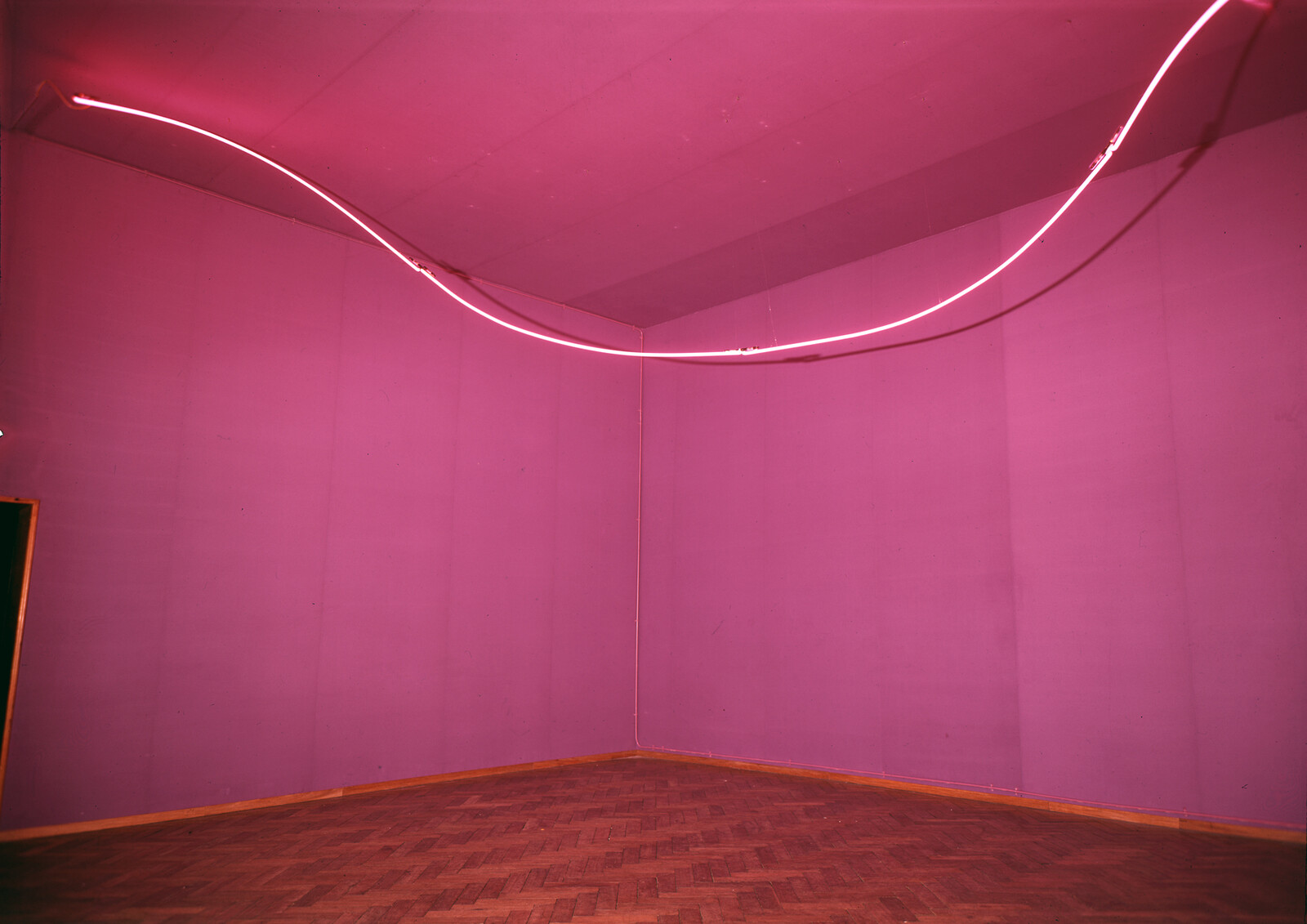Ambienti/Environments
September 21, 2017–February 25, 2018
Via Chiese, 2
20126 Milan
Italy
Hours: Thursday–Sunday 10:30am–8:30pm
T +39 02 6611 1573
info@hangarbicocca.org
Curated by art historian Marina Pugliese, conservator Barbara Ferriani, and Pirelli HangarBicocca Artistic Director Vicente Todolí. In collaboration with Fondazione Lucio Fontana.
Pirelli HangarBicocca in Milan presents Ambienti/Environments, a groundbreaking exhibition that brings together for the first time nine of Lucio Fontana’s seminal Ambienti spaziali, displayed throughout the gallery’s 5,000-square-metre space. Fontana’s pioneering work in the realm of installation art highlights the farsighted, innovative genius of this 20th century master.
Visitors to a major exhibition which will be staged at 15,000-square-metre Pirelli HangarBicocca in Milan will be able to walk through several of Lucio Fontana’s celebrated Ambienti spaziali (Spatial Environments) featuring different forms and colors which unfold through rooms, corridors and labyrinthine paths. As the public moves through and lingers within them, they gain a full sense of the amazing iconic and aesthetic power that makes these works so innovative even today. The show Ambienti/Environments, opening on September 20, 2017, has been developed in collaboration with Fondazione Lucio Fontana.
Ambienti/Environments opens with the environmental intervention Struttura al neon per la IX Triennale di Milano (Neon Structure for the 9th Milan Triennale, 1951), which Fontana conceived as a decorative element for the 9th Milan Triennale. This vast arabesque, made up by hundred-meters-long neon tubes, hangs at the entrance to the exhibition space, ushering visitors into the series of environments, displayed in chronological order. They start with the first one the artist made, Ambiente spaziale a luce nera (Spatial Environment in Black Light, 1948–49), presented at Milan’s Galleria del Naviglio in 1949. It is a dark room lit by an ultraviolet lamp; suspended at the center is an abstract sculpture painted with fluorescent colors.
The public then encounters Utopie (Utopias), two corridors created in collaboration with artist and architect Nanda Vigo for the 13th Milan Triennale in 1964. These two works begin to foreground the perceptual experience of the visitor, through the use of neon lights and optical tricks, an aspect that Fontana also focused on in Ambiente spaziale (Spatial Environment), an installation conceived for his first and only large-scale solo show at an American museum, the Walker Art Center in Minneapolis, in 1966, reconstructed here at Pirelli HangarBicocca for the first time. Through a lowered tunnel with a slanted floor, visitors enter a room with neon light shining through its perforated walls.
The next three Spatial Environments employ maze-like designs and colored neons to alter the space and viewing experience. Ambiente spaziale (Spatial Environment), Ambiente spaziale con neon (Spatial Environment with Neon), Ambiente spaziale a luce rossa (Spatial Environment with Red Light), all reconstructed for the first time at Pirelli HangarBicocca, were originally conceived for the European tour of the American solo show and presented in 1967 at the Stedelijk Museum in Amsterdam and later at the Van Abbemuseum in Eindhoven. Straight after, visitors walk through Ambiente spaziale (Spatial Environment), conceived for the exhibition “Lo spazio dell’immagine” at Palazzo Trinci in Foligno the same year.
The last environment in the exhibition, presented in 1968: Ambiente spaziale in Documenta 4, in Kassel (Spatial Environment in Documenta 4, in Kassel) has been installed at the end of the chronological sequence in the Navate, since it dates from the year the artist passed away. This work takes the form of a white maze leading to a large slit in the wall.
Ambienti/Environments winds up in the Cubo space with the second environmental intervention Fonti di energia, soffitto di neon per “Italia 61,” a Torino (Energy Sources, Neon Ceiling for “Italia 61” in Turin) a monumental work made from seven levels of colored neon tubes, which Fontana designed for the Energy pavilion at the celebration for the centenary of the Unity of Italy in Turin in 1961.
The exhibition catalog will present the most up-to-date research into Fontana’s environments, featuring essays by Luca Massimo Barbero, Paolo Campiglio, Enrico Crispolti, Barbara Ferriani, Jennifer Josten, Orietta Lanzarini, Marina Pugliese, Anne Rana, Giovanni Rubino and Maria Villa.
Press enquiries:
Bolton & Quinn
Erica Bolton/Dennis Chang
T +44 (0)7711 698 186 / M +44 (0)207 221 5000 / erica [at] boltonquinn.com / dennis [at] boltonquinn.com
Pirelli HangarBicocca
Angiola Maria Gili
T +39 02644231229 / angiola.gili [at] hangarbicocca.org
Alessandro Cane
T +39 02644231232 / alessandro.cane [at] hangarbicocca.org


